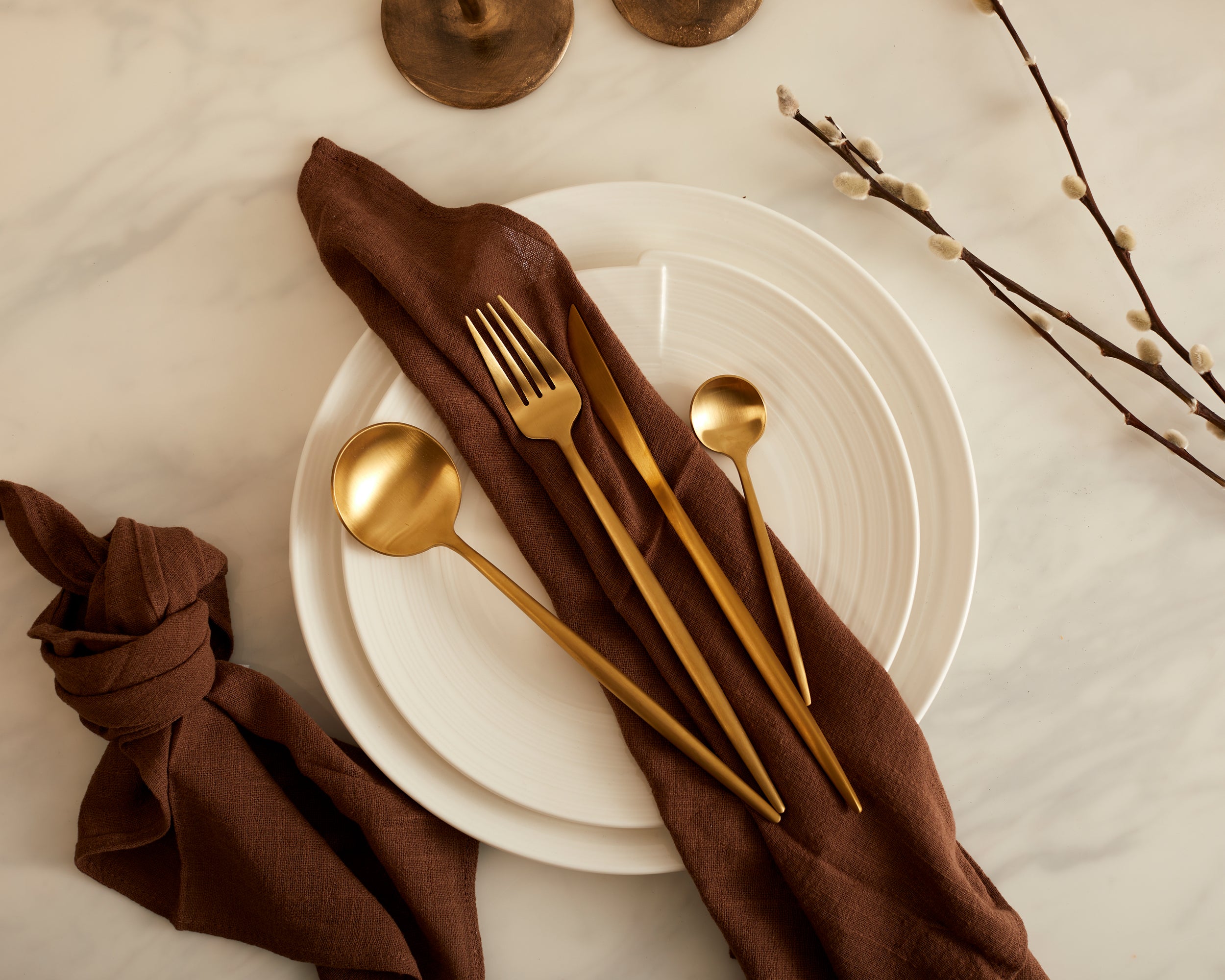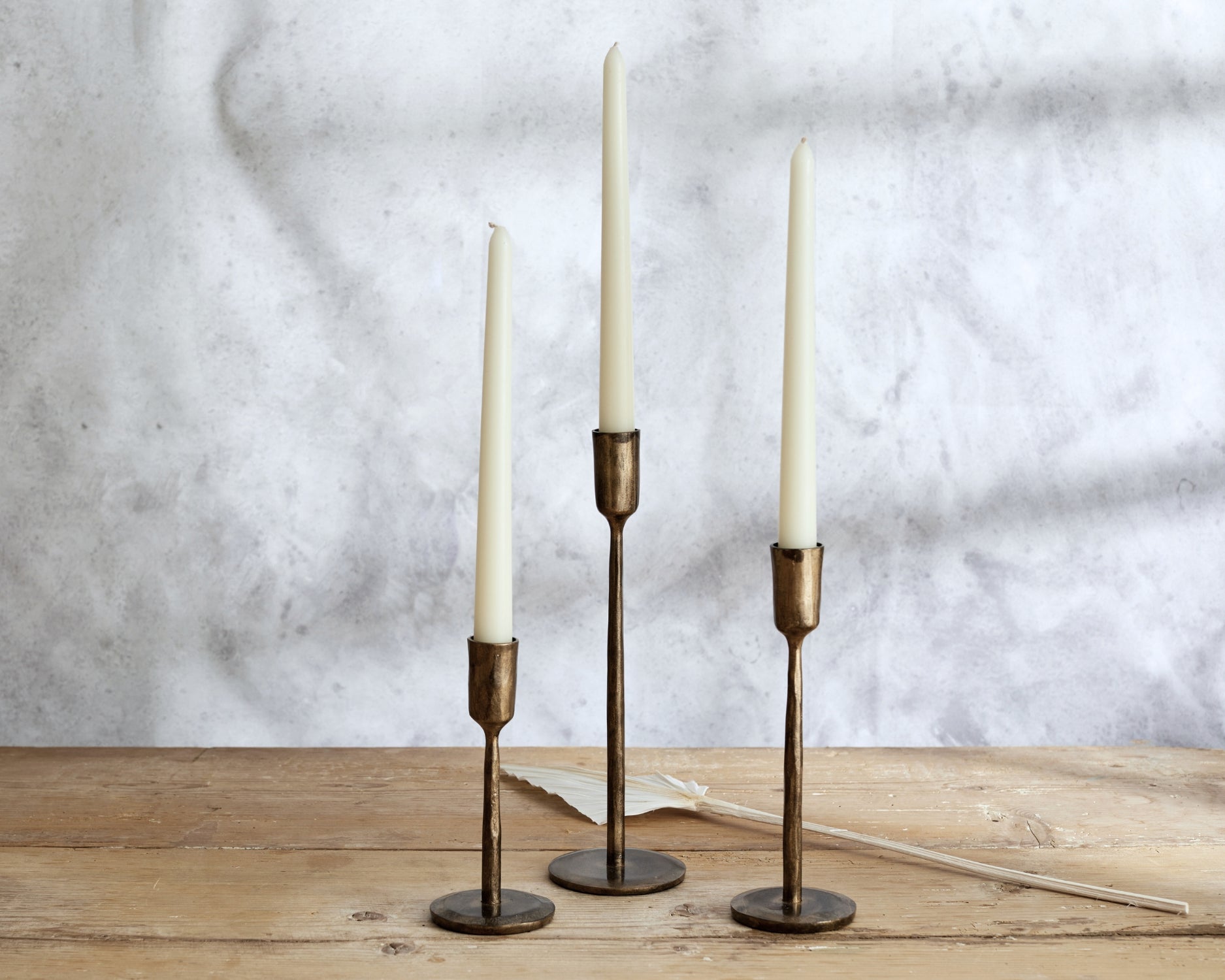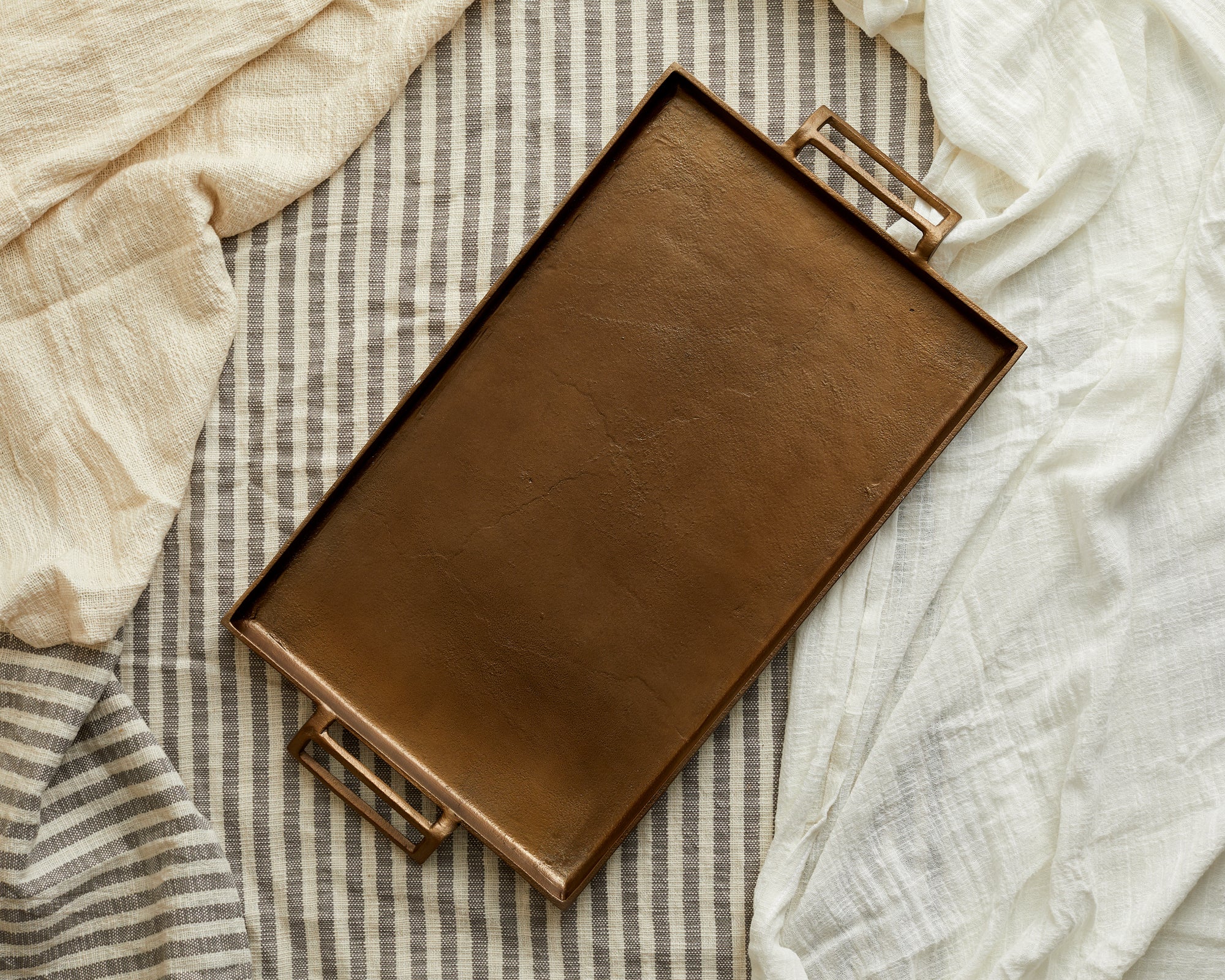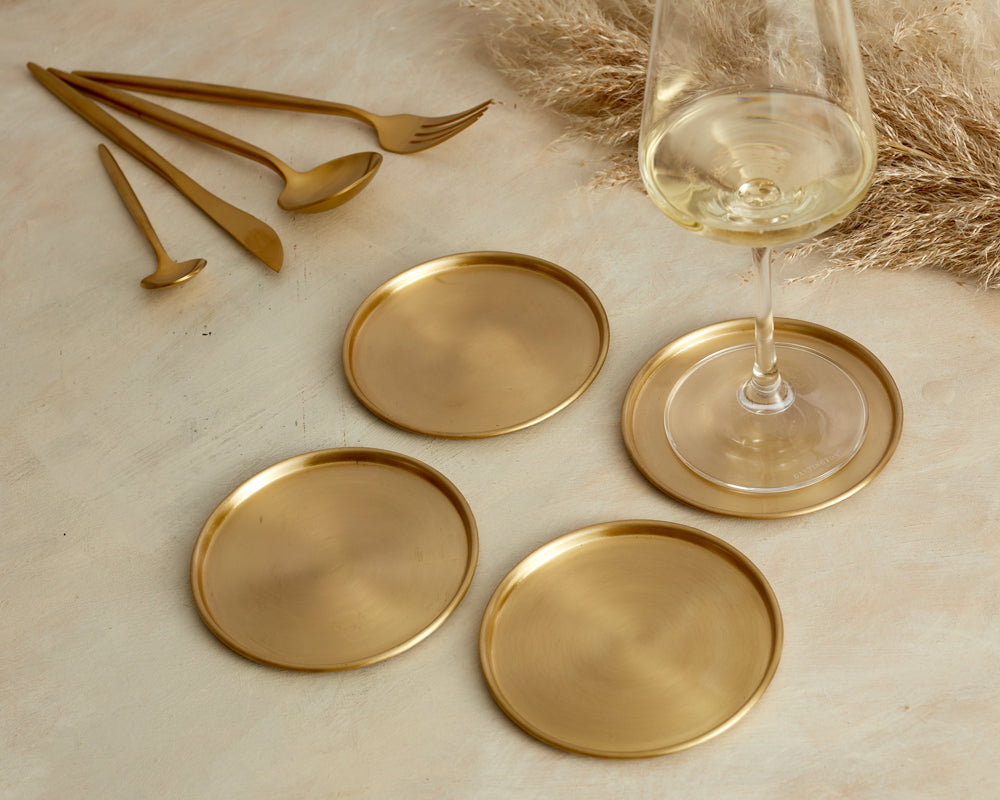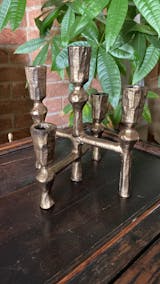Stainless steel is beloved for its sleek appearance, durability, and resistance to rust and staining. It’s a go-to choice for modern kitchens, appliances, and elegant cutlery. But even the highest quality stainless steel can lose its shine without proper care. Whether you're maintaining your Monaco Stainless Steel Cutlery Set or your everyday utensils, knowing how to clean stainless steel at home is essential.
Understanding Stainless Steel Stains
While stainless steel resists corrosion better than other metals, it’s not immune to smudges, water spots, or buildup. Common culprits include:
- Greasy fingerprints
- Soap residue
- Acidic food stains
- Hard water deposits
- Improper drying
Cleaning regularly prevents dullness and extends the life of your pieces.
Daily Care: Gentle Cleaning Without Scratching
The easiest way to clean stainless steel on a daily basis uses simple tools:
You’ll need:
- Warm water
- Mild dish soap
- Microfiber or soft cloth
Steps:
- Mix a few drops of dish soap into warm water.
- Dip your cloth into the solution and wipe the surface gently.
- Rinse with clean water.
- Dry immediately with a soft cloth to avoid water spots.
Always wipe in the direction of the grain for a streak-free finish.
Homemade Stainless Steel Cleaning Solutions
You don’t need commercial cleaners, natural ingredients work beautifully.
Vinegar and Olive Oil (for shine)
- Spray white vinegar onto the surface and wipe clean.
- Buff with a few drops of olive oil on a clean cloth, polishing in the direction of the grain.
Baking Soda Paste (for stubborn stains)
- Mix 3 parts baking soda with 1 part water.
- Rub gently with a soft sponge or cloth.
- Rinse and dry immediately.
Avoid steel wool or harsh scrubbers; they can scratch permanently.
Specialised Care: Stainless Steel Cutlery
Cutlery can develop water spots or dullness with daily use.
- For tough stains, soak in a vinegar + water (1:1) solution for 10 minutes.
- Wash in warm soapy water and dry immediately.
- Buff with a microfiber cloth for a polished finish.
Removing Rust
Though rare, rust can occur if cutlery is left wet. Remove it with:
- Baking soda paste
- Lemon juice + salt mixture
- White vinegar soak (10–15 minutes max)
- Always rinse and dry immediately after treatment.
Special Note: Coloured Stainless Steel (Gold, Black, Rose Gold)
Coloured stainless steel is created by applying a coating or finish over the steel. It’s just as durable, but needs gentler care:
Safe Methods
- Warm water + mild dish soap + microfiber cloth
- Diluted white vinegar for water spots (rinse and dry immediately)
- Very gentle baking soda paste for stuck-on food
- Mineral oil or baby oil for restoring shine
Avoid
- Harsh abrasives (steel wool, rough sponges)
- Strong chemicals (bleach, chlorine, harsh descalers)
- Long soaking in vinegar, lemon juice, or salty water
- Dishwashers — they often cause spotting or strip the colour layer
Pro tip: After cleaning, buff with a tiny drop of mineral oil on a soft cloth — this keeps coloured cutlery looking rich and streak-free.
Commercial Cleaners
Commercial stainless steel cleaners can help with:
- High-gloss appliances
- Fingerprint-heavy surfaces
- Large kitchens
Always confirm they’re food-safe before using them on cutlery.
Preventative Care: Keeping the Shine
- Dry thoroughly after each wash
- Don’t soak pieces for long periods
- Store in a dry, ventilated space
- Polish monthly with mineral oil or stainless steel polish
Natural Alternatives
If you prefer eco-friendly solutions, try:
- White vinegar → Removes hard water marks
- Club soda → Buffs out streaks
- Baking soda → Gentle scrub
- Lemon juice → Fresh-smelling degreaser
Troubleshooting
Cloudy stainless steel? Likely mineral deposits or soap film. Fix with vinegar, then dry well.
Dull stainless steel? Buff with olive oil, mineral oil, or a dedicated polish.
Maintenance Schedule
- After each use: Quick wash + dry
- Weekly: Polish with vinegar or mild cleaner
- Monthly: Buff with olive/mineral oil
- Quarterly: Inspect for rust or stains
Final Thoughts
With the right care, stainless steel, and coloured stainless steel, can stay beautiful for decades. Remember:
- Use mild cleaners
- Avoid abrasives and harsh chemicals
- Always dry immediately
- Buff regularly for a polished finish
Whether you’re setting the table with classic stainless steel or statement-making gold cutlery, proper care ensures your pieces always shine.
How to Clean Stainless Steel Like a Pro
Learning how to clean stainless steel at home ensures your investment remains beautiful and functional. Whether you're caring for cutlery, cookware, or decorative pieces, the key principles are:
- Clean regularly with mild ingredients
- Avoid abrasive tools
- Dry immediately to prevent spots
- Buff and polish for lasting shine
Well-maintained stainless steel pieces; especially when paired with stylish wooden boards, coasters, and lighting can truly elevate your home entertaining game.
Frequently Asked Questions (FAQs)
Q: What is the best thing to clean stainless steel with?
A: The best way to clean stainless steel is with warm water, mild dish soap, and a soft microfiber cloth. For added shine, you can finish with a few drops of olive oil or a dedicated stainless steel polish.
Q: Can I use baking soda to clean stainless steel?
A: Yes! Baking soda is safe and effective for removing stains or grime from stainless steel. Make a paste with water and gently scrub with a soft cloth—avoid abrasive pads to prevent scratching.
Q: How do I make stainless steel shine again?
A: After cleaning, buff the surface using a microfiber cloth and a few drops of olive oil, baby oil, or mineral oil. Always rub in the direction of the grain for a polished, streak-free finish.
Q: Is vinegar safe for stainless steel?
A: Yes, white vinegar is an excellent natural cleaner for stainless steel. It helps dissolve mineral deposits, remove smudges, and eliminate cloudiness. Be sure to rinse and dry thoroughly afterward.
Q: How do I remove rust from stainless steel cutlery?
A: Rust can be removed using a paste made of baking soda and water or by soaking the affected item in vinegar. Let the solution sit for 15–30 minutes, then scrub gently with a soft brush.
Q: What should I avoid when cleaning stainless steel?
A: Avoid abrasive cleaners, steel wool, and harsh chemicals like bleach. These can scratch or damage the surface. Also, don’t let water sit on stainless steel for long, as it can cause spotting or pitting.
Q: How often should I clean stainless steel cutlery?
A: For daily use, rinse and dry immediately after each meal. Give your cutlery a more thorough clean weekly and a deeper polish monthly to maintain its shine and prevent residue buildup.
Q: Can I put stainless steel in the dishwasher?
A: Most stainless steel items are dishwasher-safe, but hand-washing is best to prevent water spots and maintain shine; especially for coloured pieces.
